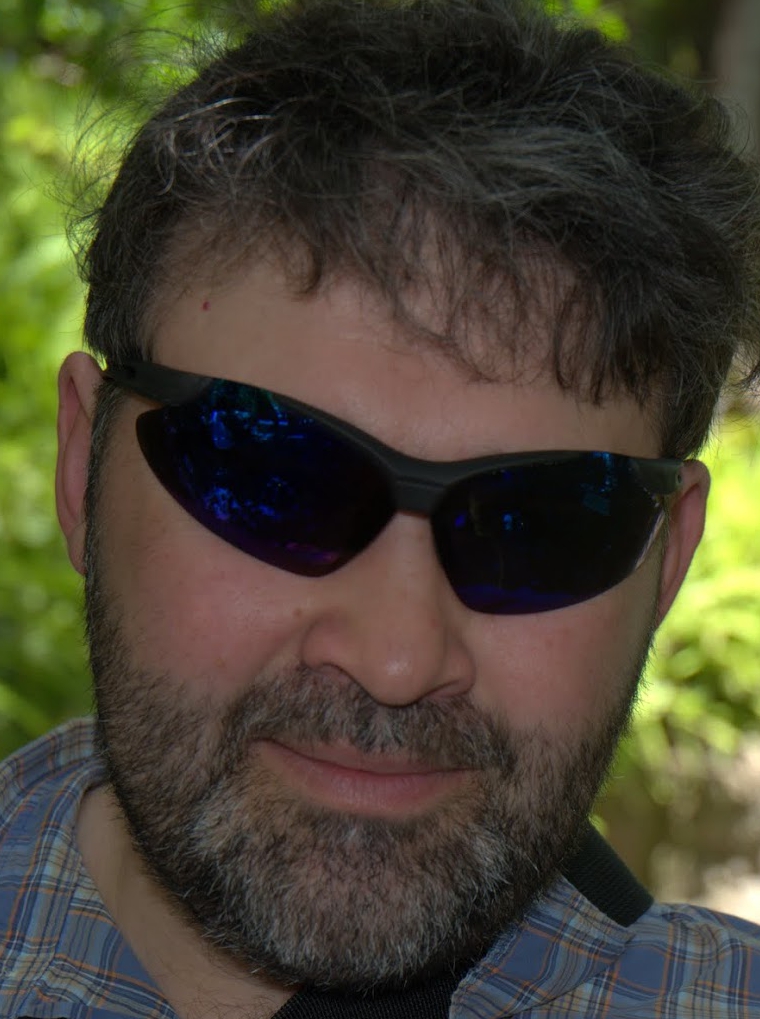#99: PARAM cards in Nastran
1) K6ROT specifies the stiffness to be added to the normal rotation for CQUAD4 and CTRIA3 elements. This is an alternate method to suppress the grid point singularities and is intended primarily for geometric nonlinear analysis. A value between 1.0 and 100.0 is recommended to suppress singularities. A large value may be required in nonlinear and eigenvalue analyses. This parameter is ignored for CQUADR, CTRIAR, CQUAD8, and CTRIA6 elements. K6ROT is forced to 0 when only membrane elements exist.
In linear solutions, the default for K6ROT is zero; that is no fictitious drilling stiffness is added. But if K6ROT > 0.0 in linear (or nonlinear) analysis, then a small stiffness is added to the normal rotation for the CQUAD4 and CTRIA3 elements. Although intended primarily for geometric nonlinear analysis, this is an alternate way to suppress grid point singularities in linear analysis and can be useful if two adjacent plates are slightly non-coplanar. In this case, each of the adjacent plates offers a small, but significant stiffness to the other in the drilling freedom, and this small stiffness may be large enough for AUTOSPC to ignore it, but may be small enough to result in numerical ill-conditioning. This situation can always be remedied by remeshing so that the adjacent stiffness goes either lower, to be trapped by AUTOSPC (in which case it may be a potential over-constraint), or goes higher to remove the ill-conditioning; a value of 1.0 for K6ROT can be used to alleviate this problem.
For nonlinear analysis, the default value of K6ROT is 100. In most instances, the default value can be used, but for highly nonlinear problems the value may have to be increased. Too small a value will cause convergence difficulties in these cases, but too large a value may cause the solution to diverge, or even worse, the solution may succeed, but the answers may be inaccurate. Generally speaking, the smallest value to achieve convergence should be used, and experience has shown that values in the range 100 to 10000 are acceptable.
Models containing, RBE2 and RBE3 elements, BCONTACT surfaces and LRFOFF and may be extremely flexible. Thus rotations are large. To get control of the rotations for the CQUAD4/CTRIA3 elements K6ROT values as high as K6ROT=1800 may be required.
In Nastran, shell elements have five degrees of freedom per node, three displacements and two rotations. The K6ROT parameter provides an in-plane rotational stiffness (so-called drilling stiffness) accounting for the missing sixth degree of freedom. The absolute stiffness value provided by K6ROT is applied to all shell elements in the same manner. This way a singular stiffness matrix is avoided for shell models.
In OptiStruct, the shell elements have a built-in drilling stiffness. Each element’s drilling stiffness is calculated from the element properties using a shape function. This way, the shell elements in OptiStruct have six degrees of freedom per node, three displacements and three rotations. The OptiStruct approach is more accurate, since it derives the drilling stiffness from the structural properties of each element. This leads to somewhat different results between OptiStruct and Nastran for shell models.
An alternative shell element formulation is available in OptiStruct that matches more closely with the Nastran formulation. The primary difference with respect to the default OptiStruct shells is the absence of drilling stiffness. Some stabilization terms and other adjustments are added for reliable performance. The resulting elements are generally more flexible than the default OptiStruct shell elements, especially on curved geometries.
2) AUTOSPC specifies the action to take when singularities exist in the stiffness matrix [Kgg]. AUTOSPC=YES means that singularities will be constrained automatically. AUTOSPC=NO means that singularities will not be constrained. If AUTOSPC=NO is set, then the user should take extra caution analyzing the results of the grid point singularity table and epsilon.
AUTOSPC “does not work” in sol 106, you need PARAM,AUTOSPCR,YES
3) PARAM, POST, 0
creates .xdb in 100 SOLs
4) PARAM, POST, -1
creates .op2 old
5) PARAM, POST, 1
creates .op2 new
6) PARAM, BAILOUT, -1
Option to avoid the termination of the solution. With the obtained result you can probably detect, what is wrong with your model (for example, lack of constraints).
7) PARAM PRTMAXIM YES
PRTMAXIM parameter requests printout of maximum applied loads, single-point constraints, multi-point constraints, or displacements.
8) PARAM LGDISP 1
to consider large geometric effects from loading
MDLPRM,HDF5,1
-1 = Do not create NH5RDB database (Default).
0 = Create NH5RDB database without compression.
1 = Create NH5RDB database with compression.
2 = Create uncompressed NH5RDB database without input data.
3 = Create compressed NH5RDB database without input data.

Recent Comments